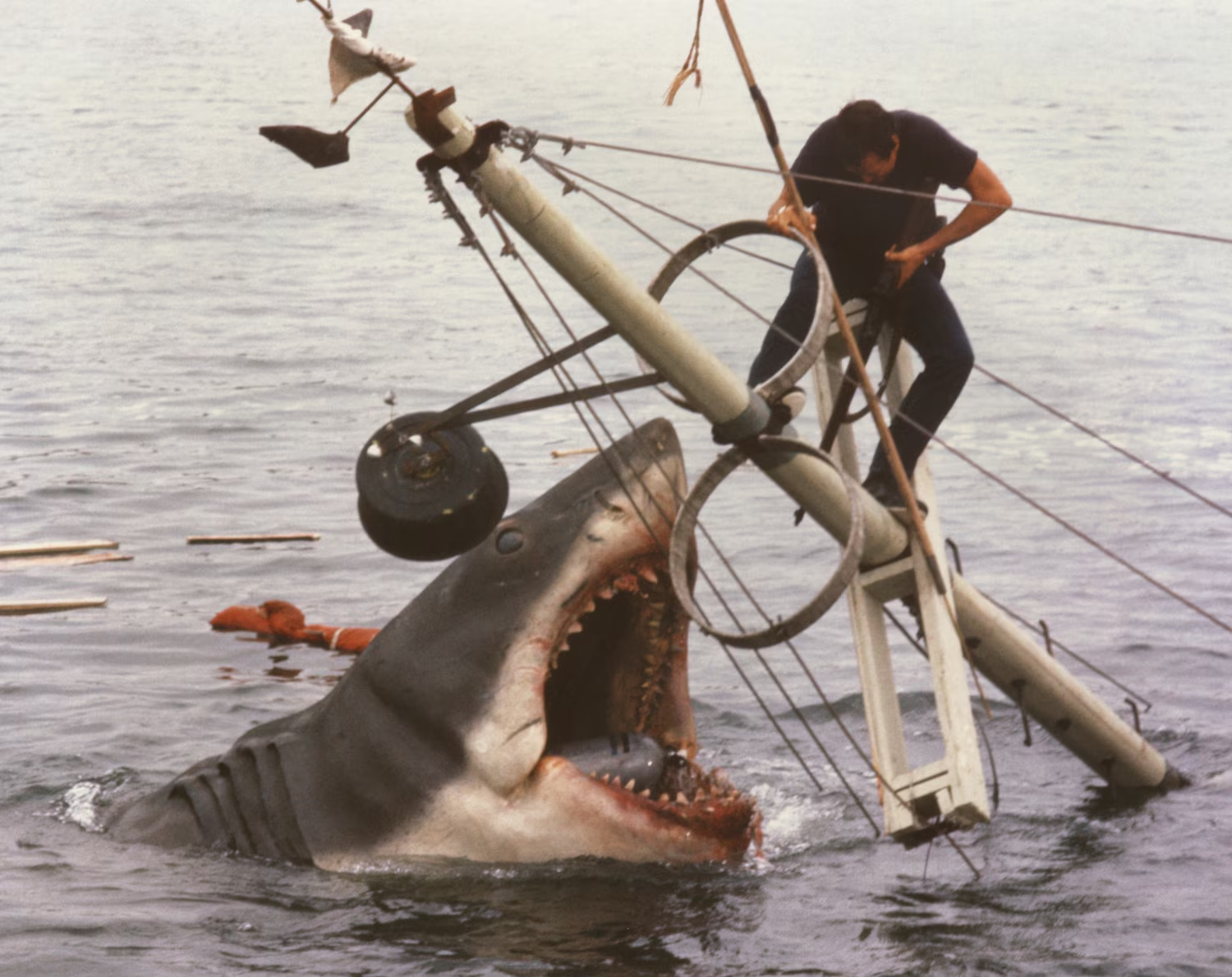Fifty years ago, one of cinema’s most chilling and iconic masterpieces changed the way people viewed the ocean and its top predator forever. Jaws, directed by Steven Spielberg and based on Peter Benchley’s bestselling novel, was more than just a movie—it was a cultural phenomenon. The film’s unforgettable two-note theme, composed by John Williams, still evokes a deep sense of dread, symbolizing the lurking terror beneath the waves.
As Jaws marks its 50th anniversary this month, its legacy remains profound. The film, which earned more than $470 million when adjusted for inflation, tapped into a primal fear of the unknown and introduced sharks—particularly great whites—as figures of horror. But beyond the entertainment, Jaws reshaped public perception of sharks and had real-world consequences for conservation efforts.
Georgia Couple Arrested After Allegedly Keeping 3-Year-Old Locked in Backyard Shed for Weeks
A Summer Blockbuster That Redefined Fear
Set on the fictional Amity Island, Jaws follows the deadly rampage of a great white shark that preys on swimmers and boaters, threatening both lives and the town’s summer tourism economy. After a woman is killed, local officials wrestle with the growing threat beneath the surface. Spielberg’s use of innovative water-level camera angles and suspenseful pacing turned the unseen into the terrifying, enhancing the psychological impact on audiences.
Few cinematic scores are as instantly recognizable as the Jaws theme. Its ominous, repetitive rhythm can provoke anxiety even far from the ocean. That two-note motif became a universal symbol of impending danger—and by extension, of sharks themselves. Chris Lowe, director of the Shark Lab at California State University, Long Beach, notes that Jaws became as iconic to the American summer as the Fourth of July or apple pie.
Shaping Shark Perceptions for Generations
When the film hit theaters on June 20, 1975, it did more than break box office records. It fundamentally shifted the cultural perception of sharks. Prior to Jaws, sharks were seen by many as fascinating yet mysterious ocean dwellers. The film transformed them into feared villains—indiscriminate predators lurking just out of sight.
Lowe recalls that in places like Martha’s Vineyard, where the movie was filmed, the ocean once inspired awe and curiosity. Before Jaws, people feared whales more than sharks, thanks in part to literary classics like Moby-Dick. But Jaws gave the great white shark a new identity as a relentless menace, overshadowing all other marine creatures in the public’s imagination.
This shift wasn’t just limited to America. The fear spread globally, with viewers everywhere suddenly associating the ocean with danger. Ross Williams, founder of the fan site The Daily Jaws, explains that Spielberg’s decision to shoot from the shark’s perspective made audiences feel like they were swimming alongside the victims—amplifying the fear of the unseen.
From Fictional Terror to Real-World Consequences
Though Jaws was not the first media to portray sharks as dangerous, it was the most influential. Anti-shark narratives had existed in horror stories and news reports for decades, but Jaws crystallized the idea of the shark as a bloodthirsty killer. James Wilkowski, director at Oregon State University’s Marine Experiment Station, argues that the film turned sharks into a symbol of evil, reinforcing long-standing misconceptions.
In reality, experts have long clarified that sharks are not naturally aggressive toward humans. Taylor Chapple, co-lead of Oregon State’s Big Fish Lab, emphasizes that humans are not on the shark’s menu. “They don’t want to eat us,” he says. “If they did, we’d be easy pickings. It’d be a buffet.”
Most shark attacks are cases of mistaken identity, not deliberate hunting. The myth of the shark as a man-eater, perpetuated by the film, has contributed to global fear—and tragically, to steep declines in shark populations due to overfishing and trophy hunting.
Conservation in the Wake of Fear
After Jaws was released, shark populations around the world began to suffer. Driven by fear, many saw shark hunting as a justifiable means of protection. But experts like Lowe argue that this fear made it easier to ignore the ecological role sharks play as apex predators.
Today, the tide is slowly turning. As scientific understanding grows and conservation efforts gain traction, sharks are being seen in a new light. They’re not just terrifying creatures of the deep—they are vital to healthy marine ecosystems. Their presence helps regulate populations of other species and maintains ocean balance.
Yet, the threats remain. According to the Shark Research Institute, humans kill over 100 million sharks annually, largely due to bycatch, finning, and sport fishing. As shark numbers decline, entire marine food webs are at risk.
From Villains to Victims: A Changing Legacy
Jaws left a legacy of fear, but also sparked decades of fascination and dialogue about sharks. As Chris Lowe notes, the initial terror has slowly evolved into curiosity and admiration. What was once a creature to fear is now one to protect.
As we reflect on the 50th anniversary of Jaws, we recognize both its cultural power and the need to correct the misconceptions it helped create. While the great white shark in the film was a monster, real sharks are not. They are intelligent, essential creatures fighting for survival in a world that still misunderstands them.
Ultimately, Jaws is a cinematic landmark that changed the way we view the ocean. But as we move forward, it’s critical that fascination gives way to education—and that our fear becomes fuel for conservation.

